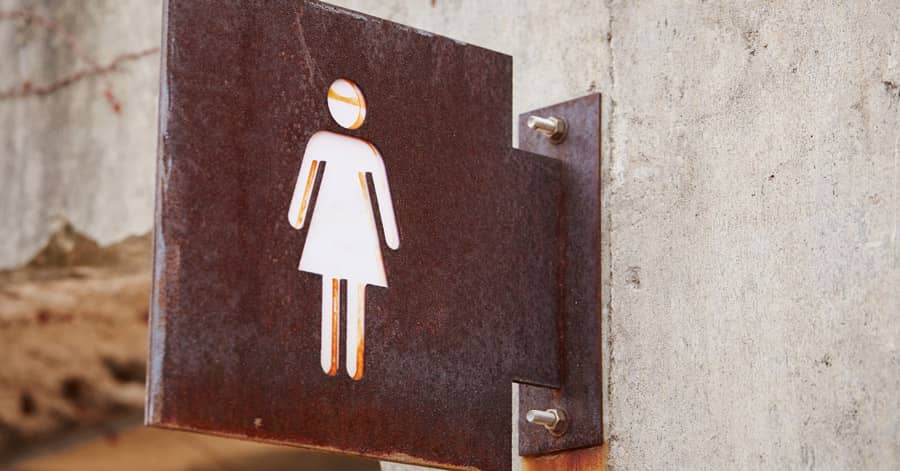Failing to make it to the toilet, peeing a little bit when you cough, sneeze or jump or uncontrollably breaking wind when you bend over to pick something up. These are all the embarrassing signs and symptoms of a weak pelvic floor.
Now to better understand exactly how the pelvic floor works and why it is such a crucial muscle for stabilising the pelvis and supporting your internal organs, let’s go through a quick anatomy lesson.
You see, the pelvic floor is a group of muscles and ligaments that support the bladder, uterus (womb) and bowel. These muscles stretch like a firm muscular trampoline or hammock from the tailbone (coccyx) to the pubic bone (front to back) and from one sitting bone to the other sitting bone (side to side).

This is what your pelvic floor looks like from above. Image courtesy of openstax cnx – https://cnx.org
This firm and thick pelvic floor muscle has passages that the urethra, anus and vagina (for woman) pass through. These muscles normally wrap quite firmly around these holes to help keep the passages shut, and ensure no accidents happen.
However, through lifestyle factors such as:
- Pregnancy and childbirth for women
- Straining on the toilet
- Chronic coughing
- Heavy lifting
- High impact exercise
- Age
- Obesity
These muscles can become chronically weak and ‘lax’ … so like any other muscles, the pelvic floor muscles need regular exercise to function optimally.
Pelvic Floor First says pelvic floor muscle exercises can help:
- improve bladder and bowel control
- reduce the risk of prolapse
- improve recovery from childbirth and gynaecological surgery (in women)
- improve recovery after prostate surgery (in men)
- increase sexual sensation and orgasmic potential
When it comes to identifying and exercising this crucial muscle group, many people get it wrong! So let’s dive into that now …
HOW TO ISOLATE YOUR PELVIC FLOOR
- Lay or sit and relax the muscles of your thighs, buttocks and stomach
- Squeeze in the muscles around the urethra or front passage as if trying to stop the flow of urine. (For women, also squeeze in the muscles around the vagina and pull them upwards inside the pelvis.)
- Squeeze in the muscles around the anus as if trying to stop passing wind. Do not clench the buttocks, thighs or stomach.
- The muscles around the urethra and anus should squeeze up and inside the pelvis.
- Identify the muscles that contract when you do all these things together. Then relax and loosen them.
THE WORKOUT
Once you have properly identified where the pelvic floor muscle is and how to isolate it, you can start your pelvic floor workout!
- Contract, squeeze and lift for 3 – 8 seconds
- Relax and let for 8 seconds
- Repeat 8 – 12 times 3 times a day or as many times as you can
NOTE: While doing pelvic floor muscle training it is important to:
- keep breathing
- only squeeze and lift
- do NOT tighten your buttocks
- keep your thighs relaxed.
So there you have it, everything pelvic floor related! If you feel like a weak pelvic floor is an issue for you and you would like some help, make sure you get in contact to arrange an appointment with one of our skilled Chiropractic Doctors. We look forward to hearing from you soon.
Bye for now!
Dr Andrina & Dr Jacinta

